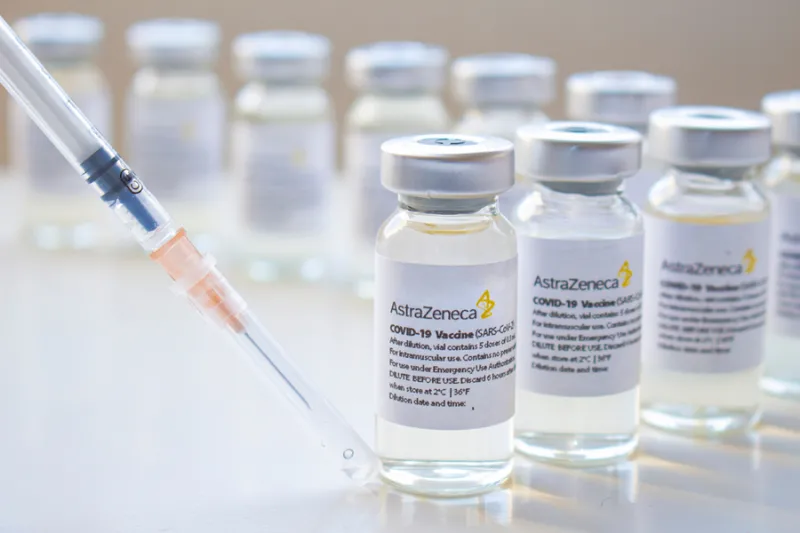
Denver Newsroom, Mar 1, 2022 / 14:48 pm (CNA).
A federal appeals court on Monday ruled to keep a lower court order in place, temporarily preventing the Navy and the Department of Defense from taking adverse action against a group of three dozen service members who object to the COVID-19 vaccine on religious grounds.
In the Feb. 28 decision, the 5th U.S. Circuit Court of Appeals upheld a preliminary injunction issued by the United States District Court for the Northern District of Texas in January, which prevents the Department of Defense from taking “any adverse action” against the plaintiffs in the case because of requests for religious accommodation.
In August 2021, the Pentagon announced that all service members would have to be vaccinated against COVID-19, and over 99% now are. The Department of Defence had maintained that “[f]orcing the Navy to deploy plaintiffs while they are unvaccinated threatens the success of critical missions and needlessly endangers the health and safety of other service members.”
The 3-judge appeals court wrote, however, that the Navy has “not demonstrated ‘paramount interests’ that justify vaccinating these 35 Plaintiffs against COVID-19 in violation of their religious beliefs,” noting that the Navy has granted temporary medical exemptions to “hundreds” of service members.
The Navy has not accommodated any religious request to abstain from any vaccination in seven years, and to date it has denied all religiously based claims for exemption from COVID-19 vaccines, the court said.
First Liberty Institute, a Christian legal group, in January filed a class-action lawsuit with the goal of blocking the Navy’s COVID vaccine mandate for all U.S. Navy personnel who have requested religious accommodation.
As a result of the initial lawsuit, Judge Reed O’Connor of the U.S. District Court for the Northern District of Texas on Jan. 3 issued an injunction preventing the Department of Defense from taking “any adverse action” against the plaintiffs in the case because of requests for religious accommodation.
Catholic bishops across the country have issued varying guidance for Catholics wishing to seek conscientious objections to COVID-19 mandates. A few have expressed explicit support for Catholics wishing to seek exemptions; some have said that Catholics may seek exemptions, but must make the case for their own conscience without the involvement of clergy; and some have stated that Catholic teaching lacks a basis to reject vaccination mandates.
In advance of the announcement of the Navy’s mandate, Archbishop Timothy Broglio of the Archdiocese for the Military Services said that receiving one of the COVID-19 vaccines approved for use in the United States was morally permissible, and that a vaccine mandate “seems prudent” and would be “very similar” to mandates already enforced in the military.
However, Broglio has also said that service members should not be forced to receive a COVID-19 vaccine against their consciences.
“The denial of religious accommodations, or punitive or adverse personnel actions taken against those who raise earnest, conscience-based objections, would be contrary to federal law and morally reprehensible,” Broglio said in October.
If you value the news and views Catholic World Report provides, please consider donating to support our efforts. Your contribution will help us continue to make CWR available to all readers worldwide for free, without a subscription. Thank you for your generosity!
Click here for more information on donating to CWR. Click here to sign up for our newsletter.






Maybe we should look at the math…
There are 35 plaintiffs among the 350,000 members of the United States Navy. A reported 99 percent of the Navy personnel are vaccinated, but we must also consider that the vaccines are hopefully 90 percent effective, at most.
In other words, at the broad scale, the 35 plaintiffs are 1,000 times as vulnerable to future infection than the rest of the Navy personnel are of being infected by the plaintiffs (99 percent of 350,000 is roughly 35,000 as compared to 35).
One could also do the more precise math for a combat ship, say, an aircraft carrier with 6,000 personnel onboard. The one or two un-vaccinated (a smaller share of the 35) seem to be in much greater peril than the rest of the crew. Such is the epidemiological perplexity of the convoluted science of COVID.
Yes, of course, there’s more to the equation of policy navigation than this, but not less. The pot is calling the kettle black, or maybe Navy blue.
Expanding on the abbreviated math above…(99% of personnel are vaccinated) x (only 90% effective) = (the remaining 10%) or 35,000 who are vaccinated and possible carriers; compared to 35 unvaccinated plaintiffs who are possible carriers.